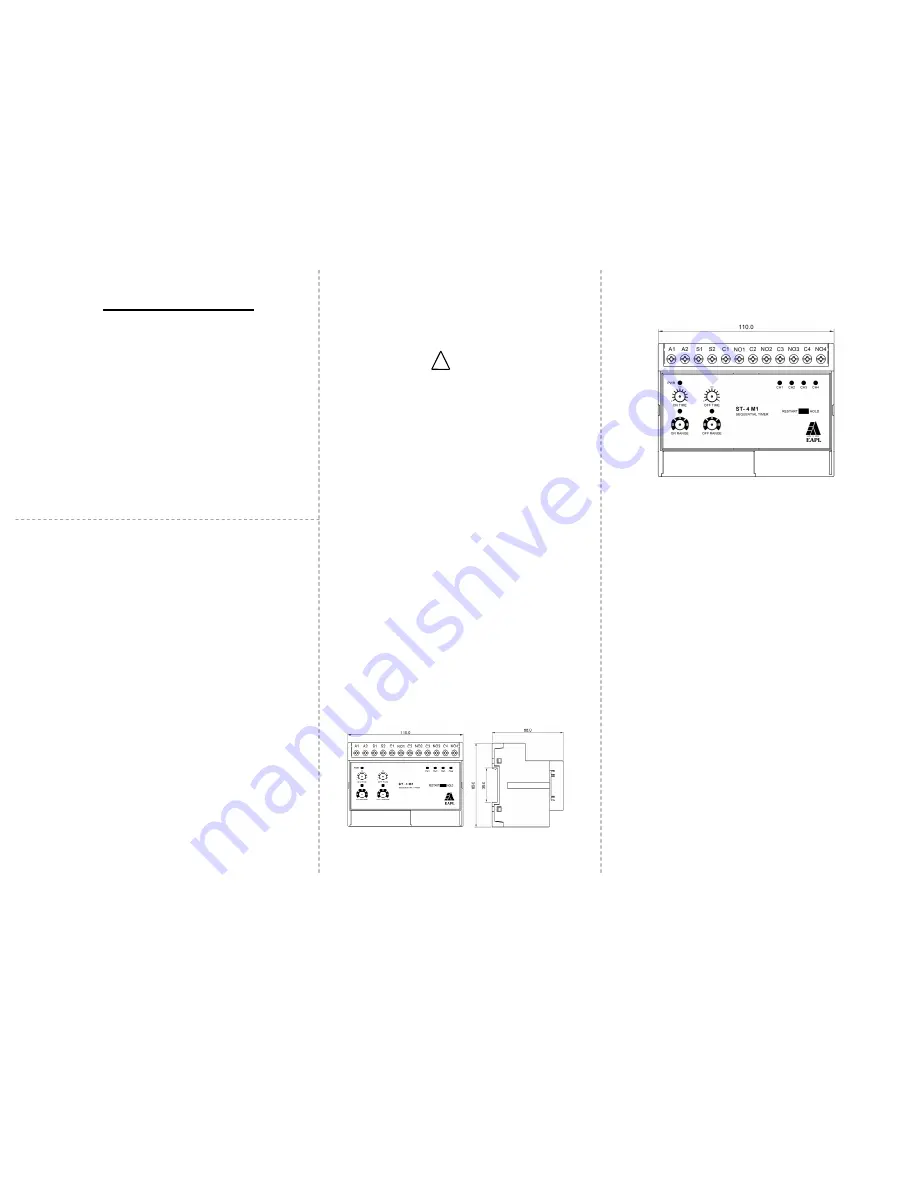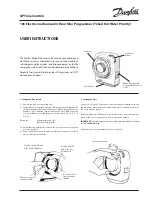
CREATED ON: May 24, 2018
Instruction Manual
ST-4M1 V2.0
SEQUENTIAL TIMER WITH 4 CHANNELS
EAPL
Introduction
On power application and continuous shorting of S1 & S2 terminals,
Timing sequence of the 1
st
channel (CH1) is initiated by switching the
relay ON and ON-time starts. At the end of the ON-time relay goes
OFF and OFF-time starts. After completion of the OFF-time CH2 relay
comes ON and ON-time starts followed by OFF-time. This sequence
continues for rest of the channels. After the OFF-time of CH4, again
the CH1 relay comes ON and this cycle keeps repeating till the power
is interrupted.
Box Accessories
One (1) ST-4M1 SEQUENTIAL TIMER WITH 4 CHANNELS
One (1) Instruction manual.
Safety Precautions
Read and follow all the safety precautions and instructions before
installing and working with the equipment.
•
S1- S2 start signal shall be applied.
•
Shorting of S1-S2 shall be potential free; applying power to these
terminals will damage the timer permanently.
!
DANGER
HAZARD OF ELECTRIC SHOCK, EXPLOSION OR ARC FLASH
•
Apply appropriate personal protective equipment(PPE) and follow safety
work practices
•
Only qualified electrical workers should install this equipment. Such work
should be performed only after reading this entire set of instructions.
•
If the equipment is not used in the manner specified by the
manufacturer, the protection provided by the equipment may be
impaired.
•
NEVER work alone.
•
Turn OFF all power supplying the Sequential timers and the equipment in
which it is installed before working on it.
•
The successful operation of this equipment depends upon proper
handling, installation and operation. Neglecting fundamental installation
requirements may lead to personal injury as well as damage to electrical
equipment or other property.
•
NEVER bypass external fusing.
•
Source Voltage should not exceed specified limits. It will damage the
unit beyond repair
•
Do not apply voltage terminals.
•
Before performing Dielectric or Megger testing on any equipment in
which the Sequential timers is installed, disconnect all the input and
output wires to the Sequential timers. High voltage testing may damage
electronic components contained in the Sequential timers.
Failure to follow these instructions will result in death or serious injury.
•
EAPL is not responsible for any consequential damages arising out of
use
of our products, though the technology is cautiously chosen and
implemented like any other well designed good electric device.
Tools and Fasteners
Kindly use star – type screw driver for tightening the screws.
NOTE:
Installation should include a disconnecting device, like switch or
circuit breaker, with clear ON/OFF markings, to turn-off the auxiliary
supply (control power).The disconnecting device should be within the
reach of the equipment and the operator
.
Dimension
Note: All Dimensions are in mm.
Front Panel
Terminal Details
A1,A2 : Source
S1-S2 : Open - Stop Signal
Continuous – Timing Initiation.
C1,NO1 : Control output 1
C2,NO2 : Control output 2
C3,NO3 : Control output 3
C4,NO4 : Control output 4
HOLD MODE: Continue the timing after resumption of interrupted power.
RESTART MODE: After the resumption of interrupted power operation starts
from the CH1 or waits for the start signal.
OD RK AN 050011
REV 02/24-05-2018
Page 1 of 2




















